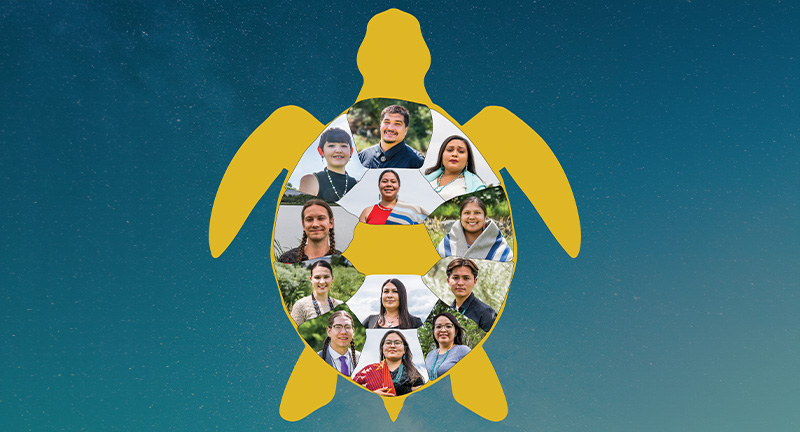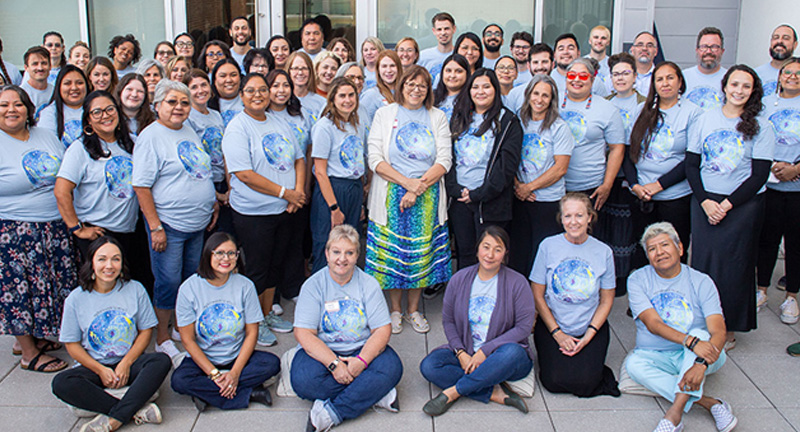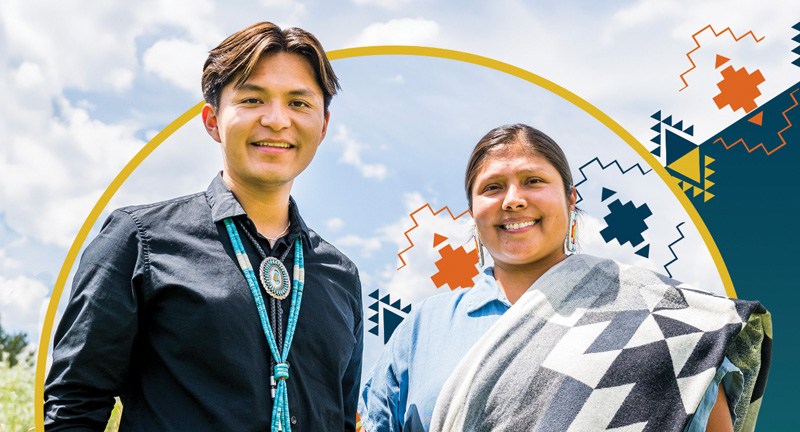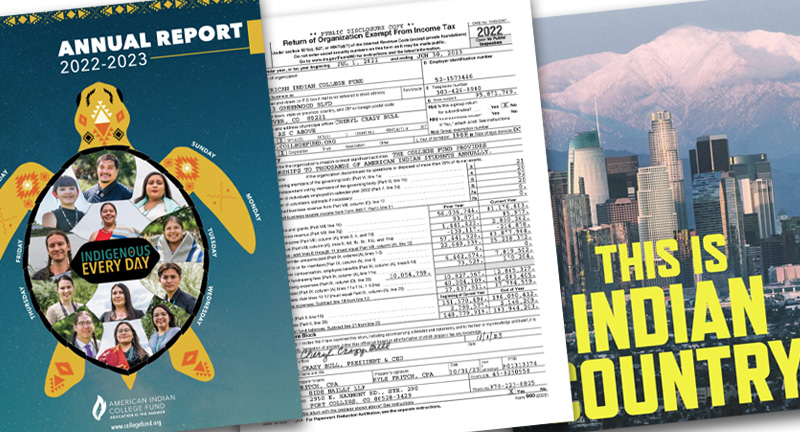By Clarice Begaye (Diné)
Diné College
Graduate 2023
This is the story of a father who instilled in his daughter the value of education in its many forms, and a mother and grandmother who paved the way through their teachings. Read the first and second parts of the story, then join us as we follow along with our storyteller in this final segment.
My father and I, much like my grandfather, Hosteen Bitsi Lakai, spent time away from home in search of work opportunities. My grandfather dedicated his life to the railroad industry and retired from it in his sixties. My father served in the Army as a combat engineer, working as a welder and construction worker, resulting in his absence from home. He gave me an old army bag to carry my belongings, which became my constant companion. I embraced a simple way of life, carrying only the essentials. I resided in employee dormitories, occasionally stayed with family and friends, or rented accommodations to pursue work opportunities. Our primary objective was to send money back home, as job opportunities were scarce on the reservation. Therefore, we made the decision to work diligently and earn money to support our family’s survival. Those who remained behind also had to work tirelessly, engaging in tasks such as home maintenance, livestock care, childcare, and the preservation of cultural knowledge. My great-grandmother and mother took charge, shouldering these responsibilities, and looking after us. My formative years were spent under the nurturing and watchful eyes of these two independent and courageous women.
During challenging times when my father was unable to provide for us, my mother’s innovative spirit shone through. She utilized her crafting abilities to create quilts, dolls, and clothing and sold food to sustain our livelihood. Her resourcefulness and unwavering dedication to our family’s well-being continue to inspire me to this day. My mother often cooked using an open flame. She always emphasized the importance of light, as it comes at a cost, because the sun demands lives. She made it a point to feed the flame when using it to cook. For me, the kitchen and an open fire were always more than just a place to cook; they were a reference to life lesson sessions. It is in these moments that we discovered the “energy for life” and found sustenance in the tales of brave warriors, wise healers, skilled herbalists, captivating storytellers, and passionate activists passed down through generations through our oral traditions, around the warmth of a stove or open fire. According to my father, this type of education cannot be found elsewhere.
Growing up, meals prepared by my mother were mainly plant-based. We went foraging for wild spinach, wild tea with flowers, short-haired red tea, wild potatoes, prickly pear, and mountain tobacco. We didn’t simply pluck them and uproot them from the ground. My mother showed us the proper way to harvest, so as not to consume without thinking. She always took part of what we picked and replanted so the plants would not die out. These excursions taught me the relevance of living in harmony with the environment, with food as medicine having healing properties.
During harvest time, the community would gather to share a meal. My parents instilled the value of giving by sharing the crops with others. We would roast corn in a pit or grill it. Corn has always been a universal crop, and my mother used it to make cereal, blue corn tamales, blue crepes, bread, dumplings, ice cream, pancakes, and corn drinks. It was also used as a side dish or boiled in stews. We even used the dried-out corn to make fine dust for morning and evening prayer. The versatility of corn showed me that there are endless possibilities and infinite combinations and techniques to approach things.
I was raised around livestock just like my father. During the round-up time, we would invite people to help separate the calves and brand them. My favorite part of round-up was butchering the cattle. My parents always emphasized that cattle are for consumption and almost every part was utilized, with hardly anything going to waste. The women in our community would prepare various dishes like corn, roast chiles, ash bread, frybread, rolls, salads, and meat. We would cook the meat underground in a pit we had dug the day before. The ladies would soak paper bags, cornhusks, and burlap sacks in water and wrap the meat with them. Once the coals were taken out of the pit, we would lay the meat down, get the flat rocks out of the fire and put them on top, lay a corrugated metal sheet on top, and put wet sand on top of it. We then covered it up and waited for several hours before digging it back up. We would then gather and eat a meal. It was in those moments I understood the true essence of being a part of a community. Unfortunately, after relocating, it was hard to find a place where we could keep our livestock while waiting for our relocation home to be built. After settling in our new home in my great grandfather’s land in Skunk Springs in Jeddito Island. We found how grazing officials regulate livestock: the cattle we owned couldn’t roam freely like before and we eventually sold all our cattle due to regulations and drought.
Learning about where food comes from, the hard work put into growing and preparing it, and giving thanks for it gave me an appreciation for the process. My father showed us how he showed his appreciation to the spirits before our daily meals by praying for the food and passing a pitcher of water around for us to take a cup of water. During special dinners, he prayed at the end of the meal, and would pass rock salt around the table to show his appreciation to Salt Woman and ask us to pray for ourselves.
This has been my education – one shaped by change and adaptation, while still keeping the flame of cultural knowledge that was passed down to me burning. We experience many transformations and adjustments throughout our lives, and the decisions we make can have a significant impact on ourselves, others, and even the world around us.

Image provided by Clarice Begaye (Diné)








